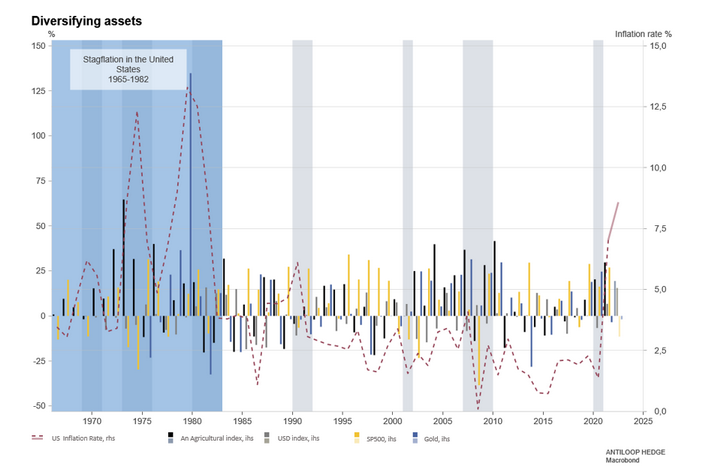Where are we on the bike?


Several economists have recently called the time ahead of us "the most anticipated recession in history". High inflation, rising interest rates and a general slowdown in the global economy are beginning to make themselves felt, and investors are increasingly using stock market rallies to sell assets rather than buy dips.
Several economists have recently called the
time ahead of us "the most anticipated recession in history". High
inflation, rising interest rates and a general slowdown in the global economy
are beginning to make themselves felt, and investors are increasingly using
stock market rallies to sell assets rather than buy dips.
We are both in a normal position and not. Not,
as in the fact that central banks in recent decades have been able to lower
interest rates to stimulate the economy when needed (with the exception of
Volcker who knew that the economy would suffer great damage at the expense of
fighting inflation), unlike today when Powell, like Volcker, must raise
interest rates into an expected recession. With normal mode, the outlook is
somewhat gloomier. Normal mode, because this type of development was to be
expected because that is what has historically always happened at the end of a
fiat currency's life cycle.
The question we as investors right now need to
answer is thus; where are we on the
bike? And, what bike ?
Before we answer where we are in a cycle, we
first need to define which cycle. If we start by looking at the recession
cycle, it is traditionally described with the following steps:
1. Early in the
cycle: GDP is recovering, economic activity is rising, credit is rising,
profits are growing faster, monetary policy policies are still dove and
stocks are low.
2. The middle
of the cycle: Growth reaches its peak, credit growth remains strong,
profit growth reaches peak levels, monetary policy policies are neutral,
no longer commodity deficits
3. Late in the
cycle: Growth slows, credit tightens, profits fall, tight monetary policy,
stocks grow
4. Recession:
Declining economic activity, more difficult to obtain credit, profits
falling and in some cases going to losses, monetary policy easing and
inventories and sales of inventories falling
Steps one and two are usually described as
recovery, while between the middle and late of the cycle is called expansive
and recession is contractive. Depending on where you are in a recession cycle,
different assets are also attractive to own. With more than a decade of
monetary policy easing and growth behind it, the tech sector looks dark.
Unlike previous recession cycles, we will now
enter a recession with tightening monetary policy. With 14 years of stimulus,
there is no longer room for central banks to hedge interest rates in the event
of declining economic activity. Instead, Powell has been forced into the same
corner that Paul Volcker once was in: destroying the economy to overcome
rampant inflation.
Assets to own during stagflation
The last time the United States was in a stagflatory situation, i.e. a period of high unemployment, high inflation and recession, was between 1965-1982. During that period, assets outperformed gold (only after the US released the gold standard in 1971, however) and agricultural commodities, while the S&P 500 stock index underperformed.


Although history does not promise any guarantees for the future, the probability is greater that the 20s will be similar to the 70s for real assets, which means that for those who believe that we are really heading into a longer period of structurally high inflation and a weaker economy, it is a better idea to own gold than the FAANG companies.
Risks
This information is in the sole responsibility of the guest author
and does not necessarily represent the opinion of Bank Vontobel Europe
AG or any other company of the Vontobel Group. The further development
of the index or a company as well as its share price depends on a large
number of company-, group- and sector-specific as well as economic
factors. When forming his investment decision, each investor must take
into account the risk of price losses. Please note that investing in
these products will not generate ongoing income.
The products are not capitalprotected, in the worst case a total loss
of the invested capital is possible. In the event of insolvency of the
issuer and the guarantor, the investor bears the risk of a total loss of
his investment. In any case, investors should note that past
performance and / or analysts' opinions are no adequate indicator of
future performance. The performance of the underlyings depends on a
variety of economic, entrepreneurial and political factors that should
be taken into account in the formation of a market expectation.
.